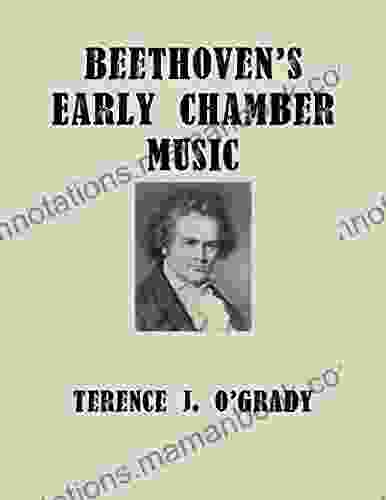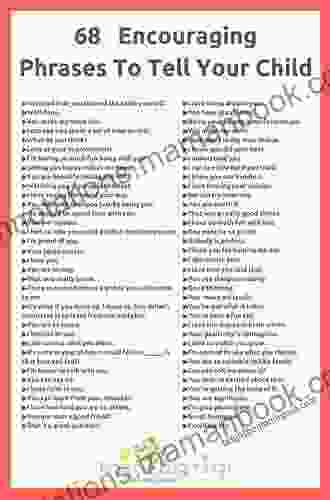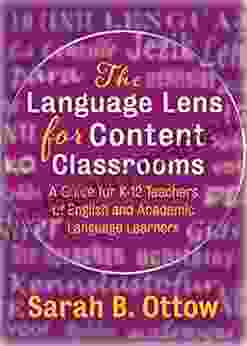Guide for Educators of English and Academic Language Learners

In today's diverse classrooms, an increasing number of students are English language learners (ELLs) or students who are learning English as an additional language while also developing their academic skills.
4.7 out of 5
| Language | : | English |
| File size | : | 4282 KB |
| Text-to-Speech | : | Enabled |
| Screen Reader | : | Supported |
| Enhanced typesetting | : | Enabled |
| Word Wise | : | Enabled |
| Print length | : | 153 pages |
As an educator, it is essential to have a strong understanding of the unique needs of ELLs and to be equipped with effective teaching strategies that support their success. This comprehensive guide provides a detailed overview of best practices for educators of ELLs and offers practical tips on how to create an inclusive and supportive learning environment that fosters language acquisition and academic achievement.
Understanding the Needs of ELLs
ELLs come from diverse backgrounds and have varying levels of English proficiency. It is important to understand the different factors that can influence their learning, including:
- Prior language experience: ELLs may have varying degrees of fluency in their native language(s),which can impact their ability to learn English.
- Age of acquisition: The age at which ELLs begin learning English can affect their rate of acquisition and their ability to develop native-like pronunciation and grammar.
- Purpose for learning English: ELLs may have different reasons for learning English, such as academic, social, or professional purposes, which can influence their motivation and learning strategies.
- Cultural background: ELLs may come from cultures with different values, beliefs, and communication styles, which can impact their interactions in the classroom.
Creating an Inclusive and Supportive Learning Environment
An inclusive and supportive learning environment is essential for ELLs to thrive. Educators can create such an environment by:
- Establishing clear expectations: Communicating clear expectations for learning and behavior helps ELLs understand what is expected of them and provides them with a sense of structure.
- Providing multiple opportunities for language input: ELLs need exposure to rich and varied language input to develop their English proficiency. This can be provided through reading, listening, speaking, and writing activities.
- Scaffolding instruction: Breaking down complex concepts into smaller, more manageable steps helps ELLs to understand difficult material and build upon their existing knowledge.
- Providing opportunities for peer interaction: Interacting with native English speakers and other ELLs can help ELLs to improve their language skills and develop confidence.
- Addressing cultural differences: Being aware of and respecting cultural differences can help to create a more welcoming and supportive learning environment for ELLs.
Effective Teaching Strategies
There are a variety of effective teaching strategies that can be used to support ELLs. Some of the most effective strategies include:
- Content-based instruction: Integrating language learning with content areas such as science, social studies, and math helps ELLs to develop their academic language skills and content knowledge.
- Sheltered instruction: This approach uses modified materials and activities that are designed to make content more accessible to ELLs while still developing their language skills.
- Cooperative learning: Collaborative group work allows ELLs to interact with native English speakers and to support each other's learning.
- Differentiated instruction: Tailoring instruction to meet the specific needs of ELLs helps to ensure that they are challenged appropriately and that they are able to access the curriculum.
- Technology-enhanced instruction: Technology can be used to provide ELLs with additional opportunities for language input and practice, and to support their learning in a variety of ways.
Assessment and Evaluation
It is important to assess ELLs' progress regularly to track their development and to identify areas where they need additional support. Assessment should be ongoing and should include both formal and informal methods.
Formal assessments, such as standardized tests, can provide valuable information about ELLs' overall proficiency in English. However, it is also important to use informal assessments, such as observations, portfolios, and teacher-made tests, to assess their progress in specific areas, such as listening, speaking, reading, and writing.
Professional Development
Educators who work with ELLs should continually engage in professional development to stay abreast of best practices and to enhance their skills. Professional development opportunities may include:
- Workshops and conferences: Attending workshops and conferences can provide educators with opportunities to learn about new teaching strategies and to network with other educators who work with ELLs.
- Online courses: Online courses can provide educators with flexible and convenient opportunities to learn about ELL education and to earn graduate credits.
- Mentoring and coaching: Mentors and coaches can provide educators with guidance and support as they develop their skills in working with ELLs.
Educating ELLs is a complex and challenging task, but it is also a rewarding one. By understanding the unique needs of ELLs and by using effective teaching strategies, educators can create an inclusive and supportive learning environment that fosters language acquisition and academic achievement.
As educators, we have a responsibility to ensure that all students have the opportunity to succeed in school. By providing ELLs with the support and resources they need, we can help them to reach their full potential and to become successful members of our society.
4.7 out of 5
| Language | : | English |
| File size | : | 4282 KB |
| Text-to-Speech | : | Enabled |
| Screen Reader | : | Supported |
| Enhanced typesetting | : | Enabled |
| Word Wise | : | Enabled |
| Print length | : | 153 pages |
Do you want to contribute by writing guest posts on this blog?
Please contact us and send us a resume of previous articles that you have written.
 Top Book
Top Book Novel
Novel Fiction
Fiction Nonfiction
Nonfiction Literature
Literature Paperback
Paperback Hardcover
Hardcover E-book
E-book Audiobook
Audiobook Bestseller
Bestseller Classic
Classic Mystery
Mystery Thriller
Thriller Romance
Romance Fantasy
Fantasy Science Fiction
Science Fiction Biography
Biography Memoir
Memoir Autobiography
Autobiography Poetry
Poetry Drama
Drama Historical Fiction
Historical Fiction Self-help
Self-help Young Adult
Young Adult Childrens Books
Childrens Books Graphic Novel
Graphic Novel Anthology
Anthology Series
Series Encyclopedia
Encyclopedia Reference
Reference Guidebook
Guidebook Textbook
Textbook Workbook
Workbook Journal
Journal Diary
Diary Manuscript
Manuscript Folio
Folio Pulp Fiction
Pulp Fiction Short Stories
Short Stories Fairy Tales
Fairy Tales Fables
Fables Mythology
Mythology Philosophy
Philosophy Religion
Religion Spirituality
Spirituality Essays
Essays Critique
Critique Commentary
Commentary Glossary
Glossary Bibliography
Bibliography Index
Index Table of Contents
Table of Contents Preface
Preface Introduction
Introduction Foreword
Foreword Afterword
Afterword Appendices
Appendices Annotations
Annotations Footnotes
Footnotes Epilogue
Epilogue Prologue
Prologue Trina Davies
Trina Davies Kathryn Marsh
Kathryn Marsh Barbara Binland
Barbara Binland Helen Bently
Helen Bently Anthony Nanfito
Anthony Nanfito Sherri Rifkin
Sherri Rifkin Nicole Trope
Nicole Trope Jocko Willink
Jocko Willink Emily Dubin Field
Emily Dubin Field Cassie Day
Cassie Day Houghton Mifflin Harcourt
Houghton Mifflin Harcourt Kelsey Timmerman
Kelsey Timmerman Joseph Grenny
Joseph Grenny Meryl Gordon
Meryl Gordon Lance Boyle
Lance Boyle Jack Underwood
Jack Underwood Travis Shreffler
Travis Shreffler Anita Mishook
Anita Mishook Shauna Singh Baldwin
Shauna Singh Baldwin T Michael Traser
T Michael Traser
Light bulbAdvertise smarter! Our strategic ad space ensures maximum exposure. Reserve your spot today!

 Allen GinsbergThe Simple and Time Proven Method Revised Edition: Unlocking the Secrets to a...
Allen GinsbergThe Simple and Time Proven Method Revised Edition: Unlocking the Secrets to a...
 Jackson HayesBuild Your Own Rockets and Planes Makerspace Models: A Comprehensive Guide to...
Jackson HayesBuild Your Own Rockets and Planes Makerspace Models: A Comprehensive Guide to...
 Israel BellThe Legacy and Impact of Darth Vader: A Look Ahead to Legacy End Darth Vader...
Israel BellThe Legacy and Impact of Darth Vader: A Look Ahead to Legacy End Darth Vader... Colt SimmonsFollow ·12.9k
Colt SimmonsFollow ·12.9k Clarence MitchellFollow ·7.9k
Clarence MitchellFollow ·7.9k Jan MitchellFollow ·10.8k
Jan MitchellFollow ·10.8k Nick TurnerFollow ·17.1k
Nick TurnerFollow ·17.1k John ParkerFollow ·10.8k
John ParkerFollow ·10.8k Hugh BellFollow ·17.6k
Hugh BellFollow ·17.6k E.E. CummingsFollow ·9.5k
E.E. CummingsFollow ·9.5k Ira CoxFollow ·10.1k
Ira CoxFollow ·10.1k

 Nick Turner
Nick TurnerBeethoven's Early Chamber Music: A Listening Guide
Ludwig van Beethoven's early...

 Clarence Mitchell
Clarence MitchellJam Yahtzee Croshaw: The Enigma Behind the Beloved Board...
In the realm of board games, where dice roll...

 F. Scott Fitzgerald
F. Scott FitzgeraldTeacher Research on Language and Literacy: Practitioner...
In an ever-evolving educational landscape,...

 Alec Hayes
Alec HayesThe New Leadership Challenge: Creating the Future of...
The nursing profession is facing a number of...

 Felix Hayes
Felix HayesPrepare for Intrigue and Suspense: A Comprehensive Dive...
Step into the captivating world...
4.7 out of 5
| Language | : | English |
| File size | : | 4282 KB |
| Text-to-Speech | : | Enabled |
| Screen Reader | : | Supported |
| Enhanced typesetting | : | Enabled |
| Word Wise | : | Enabled |
| Print length | : | 153 pages |






